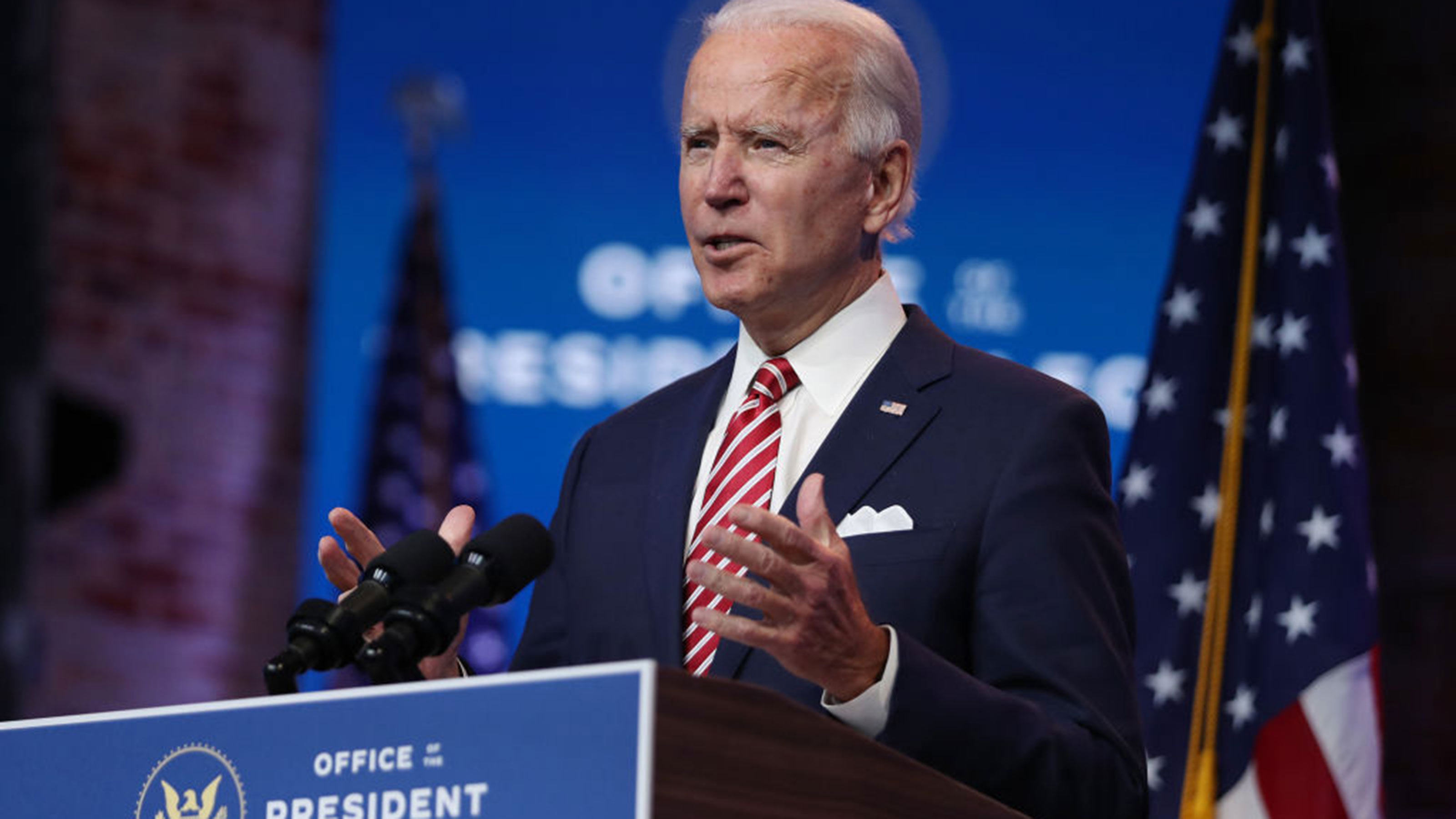What the New President Means for Your Money
President-Elect Biden wants more consumer protections and perks for the middle class and seniors.

Some of President-Elect Joe Biden’s most ambitious proposals could be sidetracked by a divided government. But Biden can use his executive powers to modify regulations on everything from Wall Street to student loans.
Control of the Senate is up in the air until early January, as two runoffs in Georgia will determine whether Republicans maintain the majority. If the Senate remains in Republican hands, Biden’s plans to raise taxes on high earners are unlikely to go anywhere.
Biden may have better luck expanding the child tax credit, currently $2,000 per child for married couples with up to $400,000 in income. Biden has proposed expanding the credit to $3,000 per child for children up to age 17 and $3,600 for children 5 and younger. That proposal has support among some Republican senators, who view it as a way to help families who are struggling to pay for child care during the pandemic, which has closed many schools.
From just $107.88 $24.99 for Kiplinger Personal Finance
Become a smarter, better informed investor. Subscribe from just $107.88 $24.99, plus get up to 4 Special Issues

Sign up for Kiplinger’s Free Newsletters
Profit and prosper with the best of expert advice on investing, taxes, retirement, personal finance and more - straight to your e-mail.
Profit and prosper with the best of expert advice - straight to your e-mail.
Regulatory changes. Biden has signaled a willingness to toughen regulation of the financial services industry by appointing Gary Gensler, a former Obama administration official, to his transition team. As head of the Commodity Futures Trading Commission, Gensler led an overhaul of how the government regulated financial derivatives, which were blamed for fueling the collapse of some Wall Street firms in 2008.
The current chairman of the Securities and Exchange Commission, Jay Clayton, and its two Republican commissioners have pushed for deregulation of the financial services industry, but Biden’s choice to head the SEC will likely advocate a more aggressive approach.
A Democratic-led SEC could revive the fiduciary rule, which was championed by the Obama administration but struck down during Trump’s tenure. The fiduciary rule requires financial professionals who give retirement advice to put their clients’ interests ahead of their own. Certified financial planners are required to comply with the fiduciary rule, but securities brokers use a less stringent suitability standard, which doesn’t require them to recommend the least expensive option available if an investment matches a client’s age and risk tolerance. In June, the SEC adopted a new regulation requiring brokers to act in their customers’ best interest, but consumer advocates say the rule doesn’t go far enough.
The Biden administration is also expected to reenergize the Consumer Financial Protection Bureau. The agency was created by the Obama administration in response to the 2008 financial crisis, but its powers were diminished by the Trump administration. Under Biden, the agency could, among other things, target problems with the three major credit-reporting bureaus—Equifax, Experian and TransUnion. Among complaints in the CFPB database over the past few years, those involving credit reporting far outnumber other types of complaints.
Social Security and Medicare. Biden has proposed shoring up Social Security by increasing payroll taxes on high-income taxpayers. He has also proposed raising benefits for low-wage workers, surviving spouses of dual-earner couples, caregivers, government workers and those who have been collecting Social Security the longest. He favors switching the annual cost-of-living adjustment—which will go up just 1.3% in 2021—to the Consumer Price Index for the Elderly, which more heavily weights senior citizens’ biggest expenses, such as health care and housing.
Like his tax hikes, these proposals face a tough road in a Republican-controlled Senate. But there may be bipartisan support for smaller changes, such as one to fix Social Security for people born in 1960 or 1961, whose benefits will be cut unintentionally by a formula glitch tripped during the 2020 economic downturn.
On Medicare, the most likely source of agreement involves the cost of prescription drugs. A bipartisan Senate bill would simplify Medicare Part D (which provides the program’s prescription drug coverage) and require insurers to kick in more money, saving seniors an estimated $72 billion in out-of-pocket costs and Medicare more than $94 billion over 10 years. The bill would also cap annual increases of prescription drug prices at the rate of inflation. (Biden would like to go further, giving the federal government the power to negotiate what Medicare pays for prescription drugs.)
Health care. Biden wants to build on the Affordable Care Act, which provides health insurance coverage to millions of Americans. (The Supreme Court has heard oral arguments in a case that challenges the ACA’s constitutionality but is unlikely to strike down the law in its entirety.) However, a Republican-controlled Senate would be unreceptive to Biden proposals to add a government-run “public option” that would be offered alongside private and employer-based plans; lower the age of Medicare eligibility from 65 to 60; and expand subsidies that reduce premiums on ACA plans.
Both parties may cooperate on legislation that would curb surprise medical billing, in which patients receive high bills for services they were unaware were out of their insurance plan’s network. Through executive action, Biden could reverse Trump-administration moves that shortened the ACA open-enrollment period and relaxed limits on short-term health plans, which come with fewer protections than ACA-compliant plans.
College. Biden’s goals include providing two years of community college tuition-free, making public colleges and universities tuition-free for families with incomes of less than $125,000, and doubling the maximum value of federal Pell grants, which are available to eligible low-income undergraduate students. He also supports simplifying income-based repayment plans for federal student loans, forgiving $10,000 in federal student loan debt for all borrowers, and forgiving all tuition-related federal loan debt for borrowers who earn less than $125,000 and attended public or historically Black colleges and universities.
Many of these proposals would face opposition from Senate Republicans, but some legal experts argue that Biden could use executive powers to cancel federal loan debt. If Congress doesn’t extend the automatic suspension of payments and interest accrual for federal student loans—a relief measure enacted in response to the coronavirus crisis—Biden may do so through executive action. Otherwise, payments resume in January 2021.
Profit and prosper with the best of Kiplinger's advice on investing, taxes, retirement, personal finance and much more. Delivered daily. Enter your email in the box and click Sign Me Up.

Lisa has been the editor of Kiplinger Personal Finance since June 2023. Previously, she spent more than a decade reporting and writing for the magazine on a variety of topics, including credit, banking and retirement. She has shared her expertise as a guest on the Today Show, CNN, Fox, NPR, Cheddar and many other media outlets around the nation. Lisa graduated from Ball State University and received the school’s “Graduate of the Last Decade” award in 2014. A military spouse, she has moved around the U.S. and currently lives in the Philadelphia area with her husband and two sons.
-
 Forget FIRE: Why ‘FILE’ Is the Smarter Move for Child-Free DINKs
Forget FIRE: Why ‘FILE’ Is the Smarter Move for Child-Free DINKsHow shifting from "Retiring Early" to "Living Early" allows child-free adults to enjoy their wealth while they’re still young enough to use it.
-
 7 Tax Blunders to Avoid in Your First Year of Retirement
7 Tax Blunders to Avoid in Your First Year of RetirementA business-as-usual approach to taxes in the first year of retirement can lead to silly trip-ups that erode your nest egg. Here are seven common goofs to avoid.
-
 How to Plan for Social Security in 2026's Changing Landscape
How to Plan for Social Security in 2026's Changing LandscapeNot understanding how the upcoming changes in 2026 might affect you could put your financial security in retirement at risk. This is what you need to know.
-
 9 Types of Insurance You Probably Don't Need
9 Types of Insurance You Probably Don't NeedFinancial Planning If you're paying for these types of insurance, you may be wasting your money. Here's what you need to know.
-
 Amazon Resale: Where Amazon Prime Returns Become Your Online Bargains
Amazon Resale: Where Amazon Prime Returns Become Your Online BargainsFeature Amazon Resale products may have some imperfections, but that often leads to wildly discounted prices.
-
 Roth IRA Contribution Limits for 2026
Roth IRA Contribution Limits for 2026Roth IRAs Roth IRAs allow you to save for retirement with after-tax dollars while you're working, and then withdraw those contributions and earnings tax-free when you retire. Here's a look at 2026 limits and income-based phaseouts.
-
 Four Tips for Renting Out Your Home on Airbnb
Four Tips for Renting Out Your Home on Airbnbreal estate Here's what you should know before listing your home on Airbnb.
-
 Five Ways to a Cheap Last-Minute Vacation
Five Ways to a Cheap Last-Minute VacationTravel It is possible to pull off a cheap last-minute vacation. Here are some tips to make it happen.
-
 How Much Life Insurance Do You Need?
How Much Life Insurance Do You Need?insurance When assessing how much life insurance you need, take a systematic approach instead of relying on rules of thumb.
-
 When Does Amazon Prime Day End in October? Everything We Know, Plus the Best Deals on Samsonite, Samsung and More
When Does Amazon Prime Day End in October? Everything We Know, Plus the Best Deals on Samsonite, Samsung and MoreAmazon Prime The Amazon Prime Big Deal Days sale ends soon. Here are the key details you need to know, plus some of our favorite deals members can shop before it's over.
-
 How to Shop for Life Insurance in 3 Easy Steps
How to Shop for Life Insurance in 3 Easy Stepsinsurance Shopping for life insurance? You may be able to estimate how much you need online, but that's just the start of your search.

